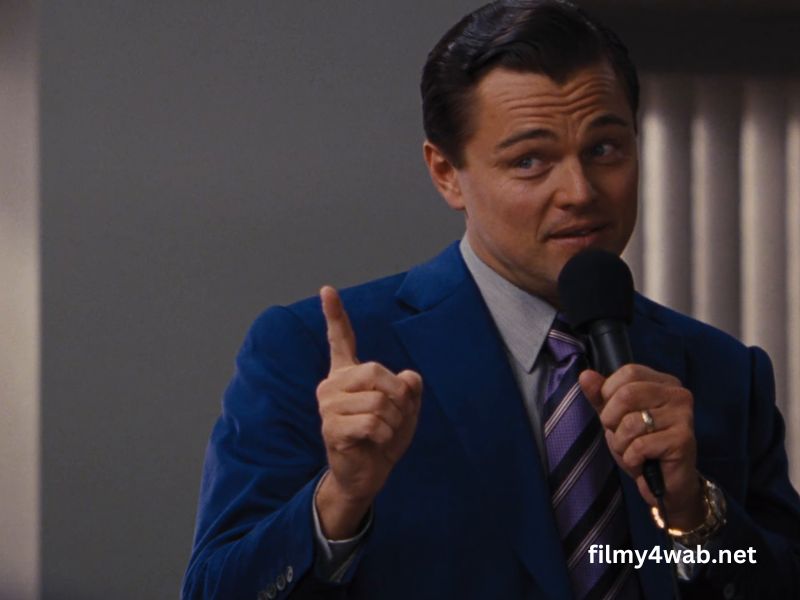The Wolf of Wall Street, directed by Martin Scorsese and starring Leonardo DiCaprio, is an iconic film that delves into the world of high finance, corporate corruption, and the pursuit of wealth at any cost. Based on the memoir of Jordan Belfort, the movie takes viewers on a rollercoaster ride through the corrupt world of Wall Street during the 1990s. With its bold storytelling, memorable performances, and thought-provoking themes, The Wolf of Wall Street has left a lasting impact on the film industry and continues to be a popular subject of discussion among film enthusiasts and critics alike.
This article explores the themes, characters, and significance of The Wolf of Wall Street, providing insight into why the film has garnered so much attention, as well as its cultural and cinematic impact.
The Plot of The Wolf of Wall Street
The Wolf of Wall Street follows the rise and fall of Jordan Belfort, a stockbroker who amasses enormous wealth by engaging in fraudulent practices and manipulating the stock market. The film is set in the late 1980s and early 1990s and shows Belfort’s transition from a humble beginnings to becoming a notorious figure on Wall Street.
Belfort, played by Leonardo DiCaprio, begins his career at a small brokerage firm before eventually founding his own company, Stratton Oakmont. There, he recruits a group of like-minded individuals, and together they use aggressive tactics and insider trading to swindle millions from investors. As the company grows, so does the excess—rampant drug use, lavish parties, and a complete disregard for the law.
The movie’s central themes include greed, ambition, and the pursuit of the American Dream at all costs. Belfort’s character is a perfect representation of the extreme lengths to which some individuals will go to achieve financial success and power, no matter the moral and ethical consequences.
Themes Explored in The Wolf of Wall Street
- Greed and Corruption
One of the most prominent themes in The Wolf of Wall Street is the concept of greed. The film portrays how unchecked ambition can lead to a complete loss of ethical boundaries. Belfort and his colleagues are driven by the desire for wealth and the rush of power that comes with it. As the story unfolds, viewers witness how greed causes the characters to engage in increasingly risky and unethical behavior, pushing them further into moral decay. - The American Dream
The pursuit of wealth and success is often referred to as the American Dream. In The Wolf of Wall Street, the American Dream is portrayed as something that can be corrupted and distorted. Belfort’s meteoric rise to wealth and power is initially seen as a success story, but the film soon exposes the dark side of this dream. Rather than hard work and merit, his success comes through manipulation, deceit, and exploitation, raising questions about the true meaning of success in America. - Excess and Hedonism
The characters in The Wolf of Wall Street live lives of extreme excess—indulging in drugs, lavish parties, and reckless behavior. The film does not shy away from depicting these excesses, which ultimately serve to highlight the destructive nature of unbridled wealth. Belfort’s pursuit of pleasure and self-gratification becomes a key part of his character, serving as a metaphor for the dangers of living in excess. - The Downfall of Hubris
As the film progresses, Belfort’s arrogance and hubris grow. His belief that he is invincible leads to his eventual downfall. The narrative shows how his excessive pride and belief in his own superiority make him blind to the consequences of his actions. This hubris ultimately results in his legal troubles, as the authorities begin to investigate his fraudulent activities.
The Characters of The Wolf of Wall Street
- Jordan Belfort (Leonardo DiCaprio)
Jordan Belfort, portrayed by Leonardo DiCaprio, is the central character of the film. DiCaprio’s performance is both charismatic and repulsive, capturing the complexities of Belfort’s personality. Belfort is charming and persuasive, traits that he uses to manipulate those around him. However, his character is also deeply flawed, driven by greed, ego, and an insatiable desire for more. DiCaprio’s portrayal earned him a Golden Globe Award for Best Actor and an Academy Award nomination. - Donnie Azoff (Jonah Hill)
Jonah Hill plays Donnie Azoff, Belfort’s right-hand man and a key figure in the rise of Stratton Oakmont. Azoff is portrayed as eccentric, funny, and incredibly loyal to Belfort, despite his own moral shortcomings. Hill’s comedic performance provides a lighter touch to the otherwise dark and serious narrative, but his character’s involvement in fraudulent activities adds to the film’s commentary on greed and corruption. - Naomi Lapaglia (Margot Robbie)
Margot Robbie plays Naomi Lapaglia, Belfort’s second wife. Naomi enters the picture as a beautiful and ambitious woman who becomes entangled in Belfort’s world of excess. Robbie’s performance as Naomi offers a glimpse into the world of luxury and the price of fame, as Naomi, like many of the characters, becomes addicted to the life of excess. - Mark Hanna (Matthew McConaughey)
Matthew McConaughey plays Mark Hanna, an established stockbroker who introduces Belfort to the corrupt world of Wall Street. McConaughey’s performance is memorable for its quirky and unsettling demeanor, as his character encourages Belfort to embrace the reckless pursuit of wealth. Hanna’s character serves as a mentor to Belfort, though his moral guidance is far from virtuous.
Cinematography and Direction
Martin Scorsese’s direction is masterful in The Wolf of Wall Street, capturing the chaotic energy of the stock market and the excesses of Belfort’s lifestyle. The film’s pacing is fast, mirroring the high-speed, high-risk world of finance. Scorsese’s use of humor, along with his sharp commentary on societal values, allows the film to strike a balance between entertainment and critique.
The cinematography, led by Rodrigo Prieto, is dynamic and vibrant, with vibrant colors and fast cuts that emphasize the intensity of the characters’ lives. The use of visual techniques such as breaking the fourth wall, where Belfort speaks directly to the audience, adds to the immersive experience of the film and allows for a deeper connection with the audience.
Cultural Impact and Reception
The Wolf of Wall Street was met with both critical acclaim and controversy. While the film was praised for its bold storytelling, strong performances, and sharp social critique, it was also criticized for its portrayal of excessive wealth and the glorification of immoral behavior. Some critics argued that the film might inadvertently glamorize the actions of its protagonists, while others saw it as a cautionary tale about the dangers of unchecked ambition.
Despite the mixed reception, The Wolf of Wall Street has cemented its place as one of the most important films of the 21st century. Its exploration of greed, ambition, and excess resonates with modern audiences, especially in the context of financial crises and growing economic inequality. The film serves as a reminder of the consequences of unchecked corporate greed and the cost of chasing the American Dream.
Conclusion
The Wolf of Wall Street is more than just a film about a stockbroker’s rise and fall. It is a powerful social commentary on the lengths people will go to for wealth, power, and success. Through the larger-than-life character of Jordan Belfort and the supporting cast of morally compromised individuals, the film sheds light on the corruption at the heart of Wall Street, exposing the darkness behind the glittering façade of wealth. With its compelling performances, sharp direction, and impactful themes, The Wolf of Wall Street remains an essential work that continues to spark discussion about the true cost of ambition and excess in today’s world.







